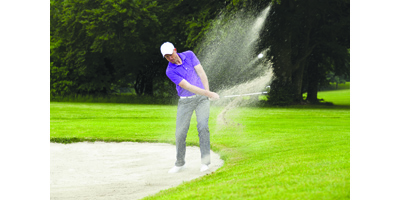I know that hacking and slashing is out of season unless it’s hockey. But maybe what we need is a little golf trivia to transport us, dream-like, back to the days of verdant fairways and three-putt greens. The latter being more of a nightmare than a dream.
This need to be mentally-transported away from winter ice and snow came to me when the PGA golf season started again last month in Hawaii’s lush, green surroundings. So let’s look ahead to the golf of spring with some fairway trivia.
You may not have the best game, the best clubs or even a nice bag, but at least you’ll possess a vast assortment of useless golf information thanks to this collection of golf trivia. Feast your double-bogey-enduring eyes on this assortment of fairway flotsam and then dazzle — or bore — your golfing friends until the season actually arrives.
• Can you name the oldest golf course in North America?
It might surprise you to know that it's Canadian, specifically the Royal Montreal Golf Club which was established in 1873. To put that date in perspective, golf didn’t really get started south of the border for another 20 years. The first 18-hole golf course in the U.S., established in 1894, was the Chicago Golf Club in Wheaton, Illinois, a suburb of the Windy City.
And here’s a little extra trivia at no extra charge: It was at the Chicago Golf Club that “out-of-bounds” started. All the holes on the course were laid out in a clockwise design, apparently because the course architect suffered from a horrendous slice and just automatically matched the course design to his game. So on this course, anything hit left (with a hook) ended up outside the golf course property and landed in a farmer’s field. Hackers who strayed left ended up slogging through muddy fields slashing endlessly at the ball in an attempt to get it back onto the golf course.
Since members were more keen on golfing than plowing, they proposed that “out of bounds” stakes be placed on the left side. This allowed the player to re-tee the hooked farmer’s field drive with a penalty and avoid the “Old Macdonald” experience.
• Where would you find the longest golf hole in North America?
Well, let’s see. In the running would be the hole in North Carolina that’s a par-six endurance test of 745 yards. That’s certainly long, isn’t it?
And then, right here in our own neck of the golf-woods, there’s La Broquerie with its monster par six measuring an exhausting 751 yards. Just for variety and compromise from the short tee it’s a par five of “only” 549 yards.
But now we hear that 841 yards is the new length-to-beat in par sixes. This incredibly long ordeal is found on a golf course in Locust Grove, Virginia. They can have it. Imagine hitting four fairway shots just to get to the green, assuming all your shots went well. And if they didn’t, you could be out there until sunset just trying to get on the dance floor. Take a lunch.
• How many new golf balls are put on store shelves every year?
Well, several million would seem like plenty, wouldn't it? In fact, about 600-million new golf balls of all grades make it to the marketplace each season. As we’re painfully aware, a great many of them end up in the bush or in water hazards.
• What golf course has retrieved the most balls from a water hazard in one season?
The number must be pretty high since we all know how many balls we personally see or shank into ponds, wherever we play. The hole that attracts the most balls is the famous “monster” 17th-hole of the Stadium Course at Florida’s TPC Sawgrass. They fish 150,000 balls from the water around that island green every year. Let’s see. The course has been open since 1982, so that’s many millions of errant short irons over the years.
Probably the worst performance on that hole in any kind of tournament was from Angelo Spagnolo. In 1985, he was playing in the “Worst Avid Golfer” event at Sawgrass and plopped 27 balls into the water, finally finishing the hole with a 66. And, to put that score in perspective, Fred Couples required only 65 shots for his entire final round there in 1996 when he won the Players Championship.
• What are the odds against making a hole-in-one?
According to the experts — who had nothing better to do and decided to study this — the odds against a golfer getting a hole-in-one are 300,000-to-one.
Getting an ace is a miracle for any golfer, but I guess the most surprising hole-in-one happened in 1996 to a nine-year-old girl at a golf course west of Toronto. Randi Wilson teed up a five iron on the 103-yard, par-three 10th hole at the Seaforth Golf and Country Club. Her tee shot flew straight into the hole. The fact that she was only nine years old makes this quite an accomplishment, but even more incredible is the fact that this was Randi’s first-ever swing with a golf club on her very first round of golf.
Talk about peaking early. Not much point in pursuing a game that’s that easy, eh?



